Southern China encompasses a culinary landscape as diverse as its geography, stretching from the hills of Yunnan to the coastlines of Guangdong and Fujian. This region has given birth to some of the world’s most celebrated cooking traditions, where fresh ingredients, bold flavors, and masterful techniques combine to create unforgettable dining experiences. What makes Southern Chinese cuisine particularly fascinating is how it balances regional specialties with influences absorbed through centuries of maritime trade and cultural exchange.
Here is a list of 15 exceptional dishes that showcase the remarkable culinary heritage of Southern China beyond the familiar favorites.
Cantonese Char Siu
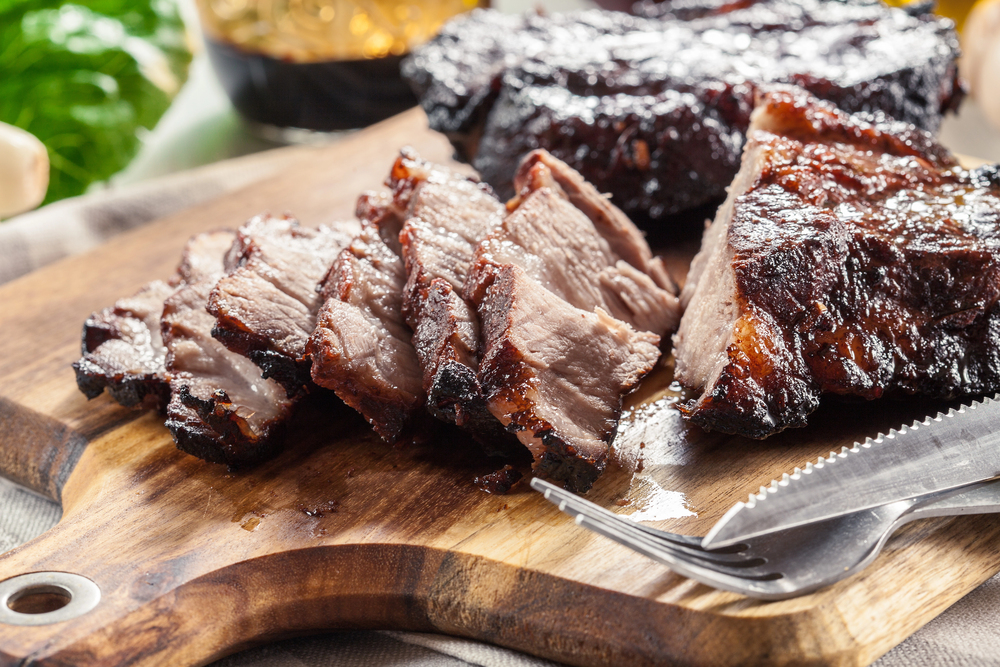
This iconic barbecued pork embodies the Cantonese mastery of roasting techniques developed over centuries in Guangdong province. The distinctive red exterior comes from a marinade blending five-spice powder, honey, hoisin sauce, and, most importantly, red fermented bean curd, which imparts both color and depth of flavor. Traditionally slow-roasted suspended over open flames, authentic char siu develops a slightly charred, caramelized exterior while maintaining succulent tenderness inside. The meat’s characteristic sweetness derives from maltose sugar brushed repeatedly during cooking – a technique requiring considerable skill to prevent burning while developing the signature lacquered appearance.
Hakka Stuffed Tofu
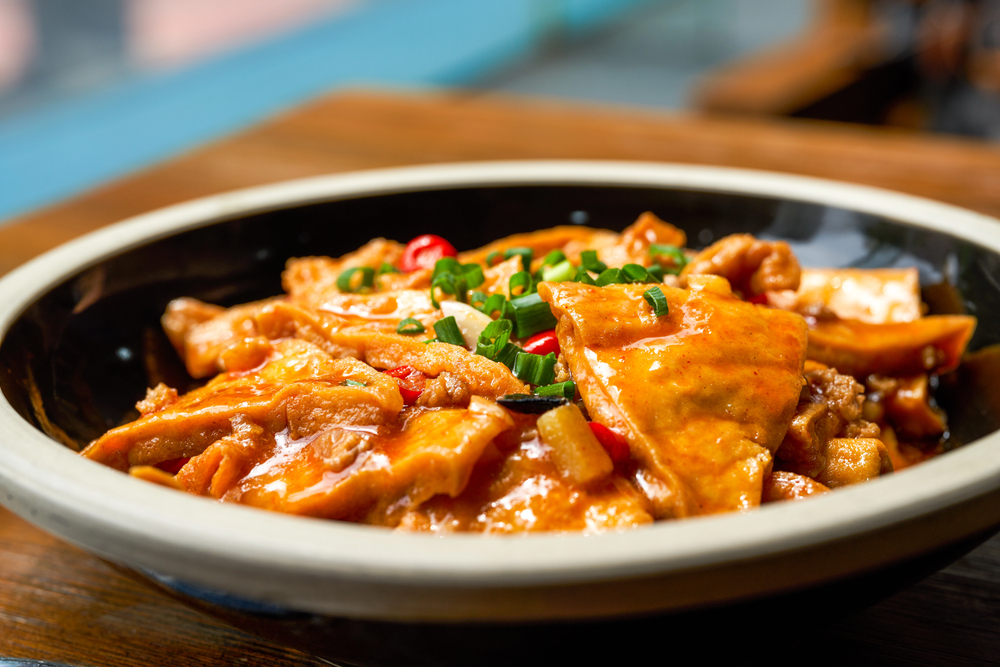
The Hakka people, historical migrants within Southern China, created this labor-intensive dish reflecting their resourcefulness and agricultural heritage. Firm tofu squares are hollowed out by hand and then filled with a savory mixture of minced pork, mushrooms, water chestnuts, and dried shrimp, seasoned with Shaoxing wine. After gentle pan-frying to develop a golden crust, the stuffed tofu simmers in a clay pot with preserved vegetables and star anise until the flavors meld harmoniously. The dish exemplifies the Hakka philosophy of making humble ingredients extraordinary through careful technique and balanced seasonings.
Like Travel Pug’s content? Follow us on MSN.
Chaozhou Marinated Raw Crab
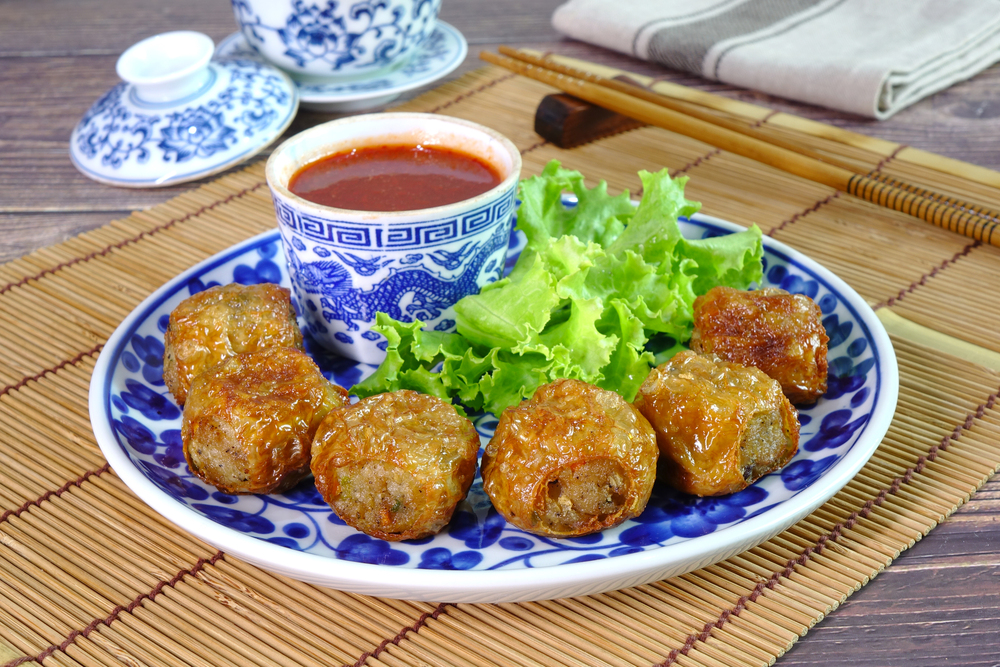
From eastern Guangdong comes this remarkable preparation where fresh mud crabs are transformed without cooking, using a preservation method dating back centuries. Live crabs are immersed in a potent mixture of aged Shaoxing wine, salt, ginger, and chilies for 48 hours, effectively “cooking” the meat through alcohol and salt curing. The result yields translucent, sweet flesh with a distinctive wine-forward flavor profile, unlike any conventional crab preparation. Typically served chilled as a special-occasion appetizer, the dish represents the Chaozhou region’s sophisticated approach to seafood preparations that maximize natural sweetness.
Hainan Wenchang Chicken
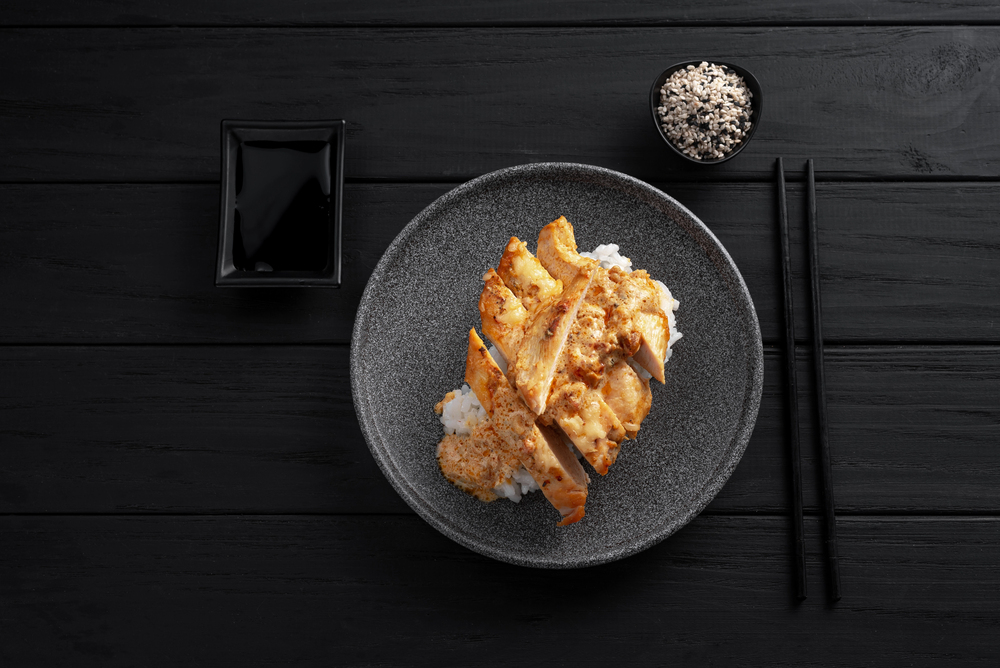
The progenitor of Southeast Asia’s famous Hainanese chicken rice originated in Wenchang City on Hainan Island, where specific free-range chicken breeds are raised on a diet including coconut and peanut meal. The cooking method appears deceptively simple – the whole bird poached in a precisely controlled master stock – but achieves extraordinary results through meticulous attention to detail. After poaching, the chicken receives a final dunk in ice water, creating the signature gelatinous skin texture cherished by connoisseurs. Three accompanying dipping sauces traditionally include ginger-scallion oil, chili garlic paste, and an aged dark soy-based blend.
Yunnan Cross-Bridge Rice Noodles
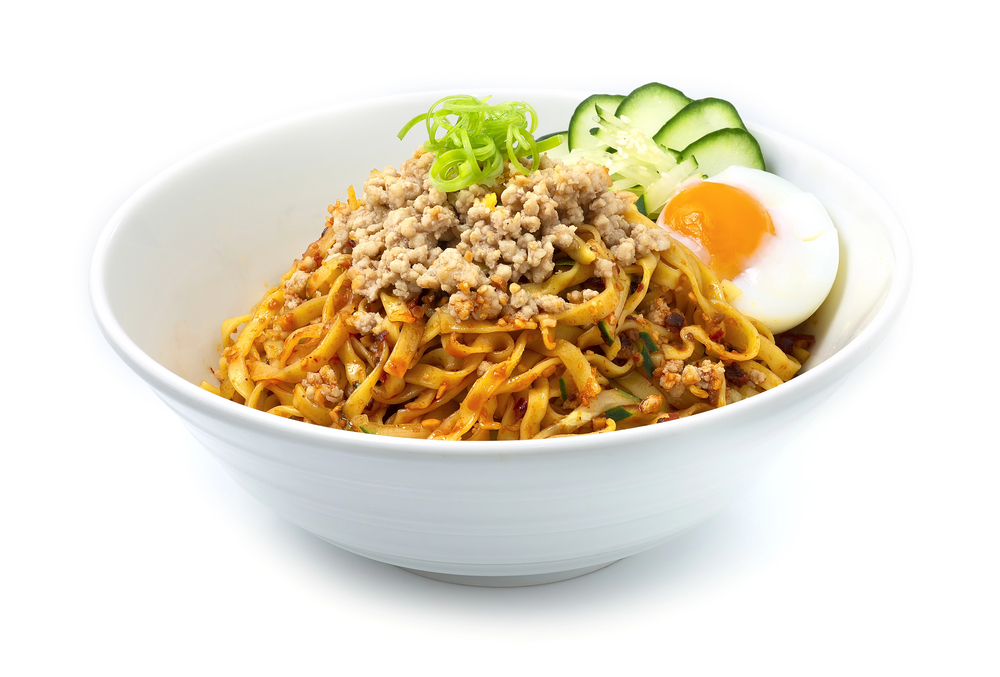
This theatrical dish comes with a fascinating origin story about a scholar’s wife who developed an ingenious method to keep her husband’s noodles perfectly cooked during his long study sessions on an island. A large bowl of scalding chicken broth arrives at the table covered with a layer of oil that traps heat, accompanied by dozens of raw ingredients arranged on separate plates. Diners add paper-thin meat slices that cook instantly in the hot broth, followed by vegetables, quail eggs, and, finally, the chewy rice noodles that absorb the complex flavors. The ritual of assembly creates a communal dining experience where conversation flows naturally during the gradual transformation of ingredients into a harmonious soup.
Like Travel Pug’s content? Follow us on MSN.
Fujian Buddha Jumps Over the Wall
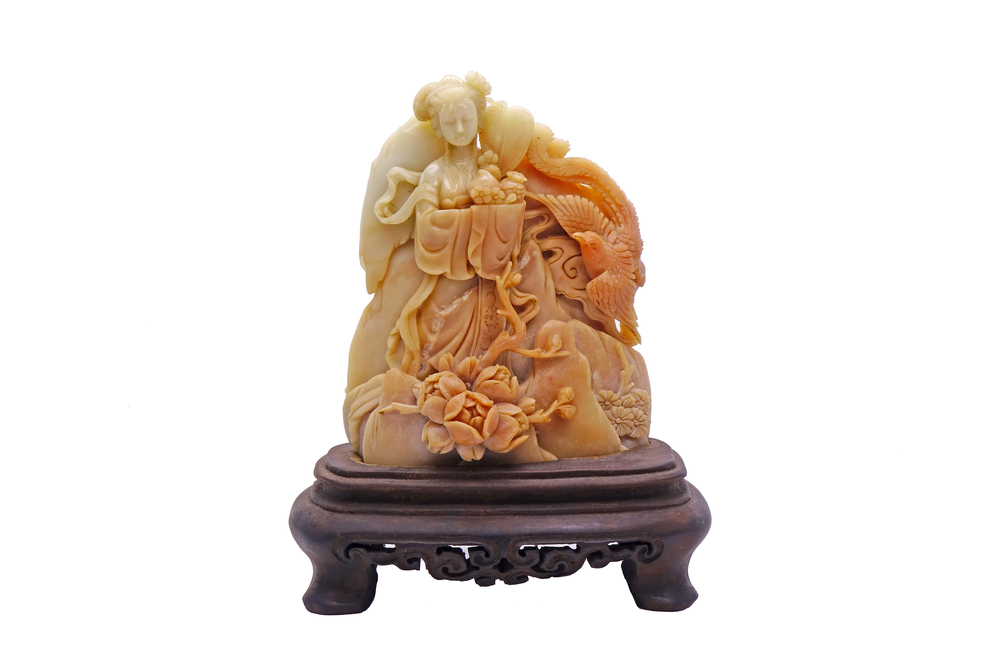
Perhaps China’s most legendary soup earned its unusual name from a tale of Buddhist monks abandoning vegetarian vows after smelling its irresistible aroma wafting over monastery walls. Premium ingredients, including abalone, sea cucumber, shark fin (though now often substituted), fish maw, scallops, and aged Jinhua ham, simmer for days in clay pots sealed with rice paste. The cooking process extracts collagen from these ingredients, creating an intensely savory broth with remarkable body and depth. Traditional preparation requires three days of meticulous work, making this dish reserved for special occasions and prestigious banquets where it symbolizes prosperity and culinary mastery.
Guangxi Guilin Rice Noodles
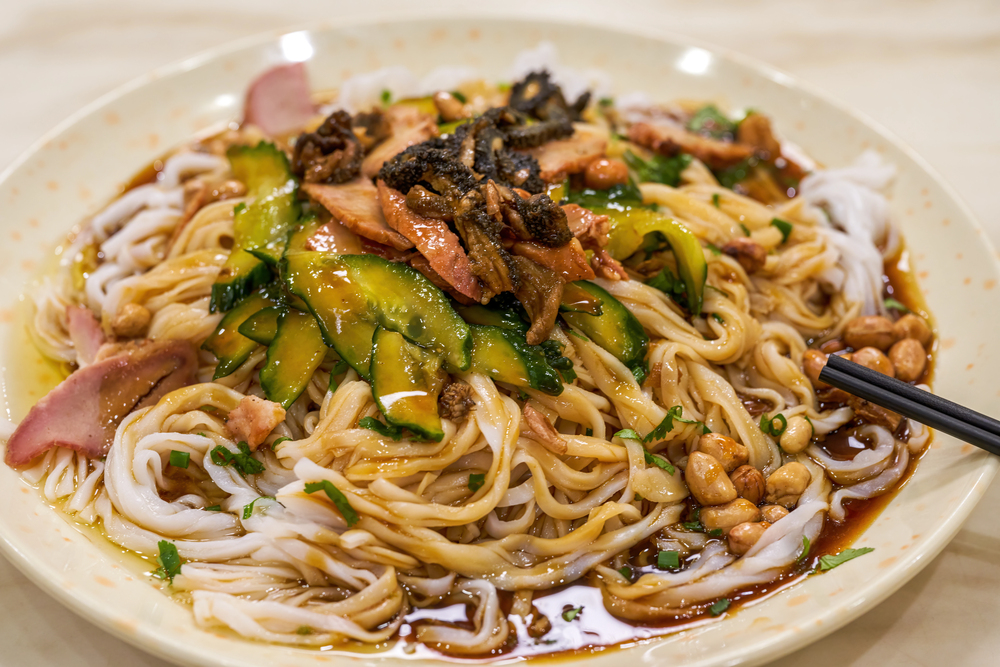
Unlike many Chinese noodle dishes served in soup, these distinctive rice noodles come in a shallow pool of complex broth topped with crispy pork, pickled vegetables, peanuts, and scallions, creating contrasting textures in every bite. The broth achieves its signature clarity and depth from simmering horse bones – a regional specialty reflecting Guangxi’s historical connections to Vietnam and Southeast Asia. What truly distinguishes these noodles are the distinctive thick, round rice strands with remarkable elasticity and a satisfying chew achieved through multiple stages of steaming and cooling during production. Street vendors throughout Guilin customize each bowl to order, allowing diners to adjust spice levels and pickled condiment ratios.
Xinhui Citrus Peel Duck
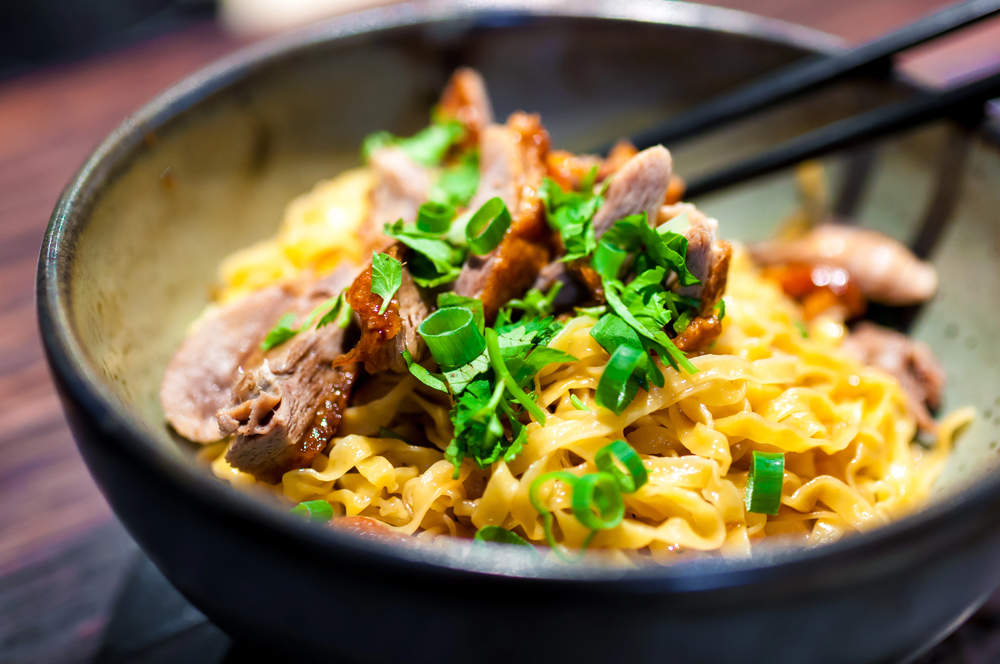
This specialty from the Jiangmen region showcases the remarkable relationship between preserved citrus and poultry that defines much of Cantonese cuisine. Local tangerine peels undergo years of careful aging – some prized specimens exceed 30 years – developing complex bitter, sweet, and aromatic compounds that transform the flavor profile of the duck. The dried peels rehydrate during a lengthy braising process alongside star anise, cinnamon, and rock sugar, creating a mahogany-colored sauce that penetrates deeply into the meat. The technique dates back to the Ming Dynasty, originally developed to preserve seasonal game birds before refrigeration while transforming tough wild ducks into tender morsels.
Like Travel Pug’s content? Follow us on MSN.
Shunde Fish Soup
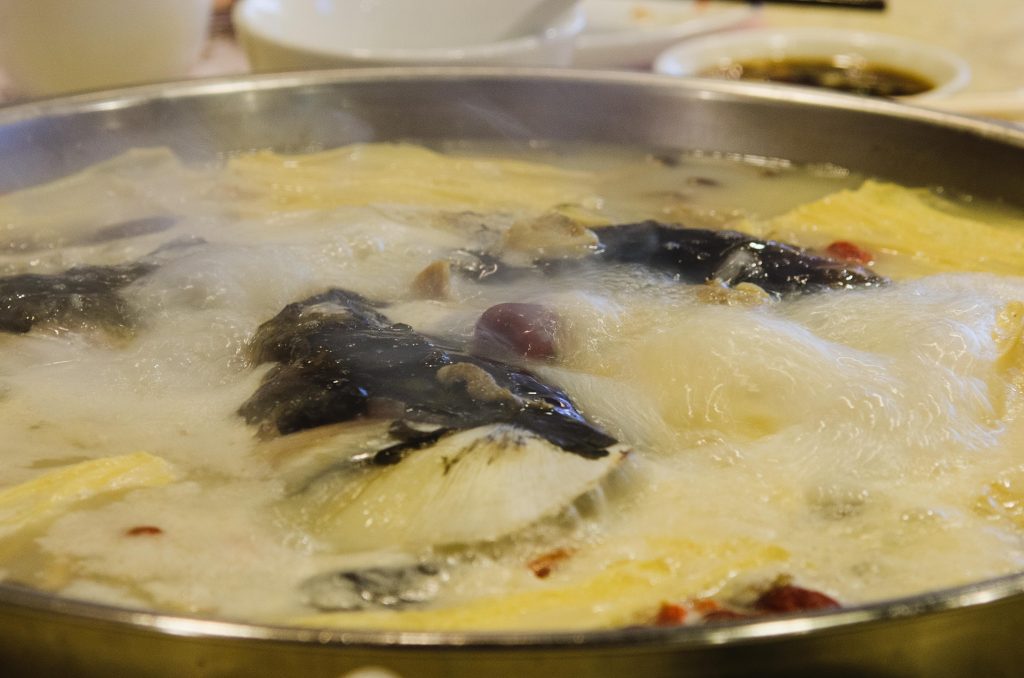
From the culinary heartland of Guangdong province comes this deceptively simple soup that exemplifies the region’s reverence for fresh ingredients and technical precision. Live fish (traditionally grass carp or snakehead) is filleted tableside, with the bones immediately used to create a milky broth while the meat is sliced paper-thin. The raw fish briefly poaches in the simmering broth alongside ginger and rice wine, cooking just long enough to remain tender without toughening. White pepper provides the only assertive seasoning, allowing the natural sweetness of ultra-fresh fish to shine through. The dish represents the pinnacle of Cantonese culinary philosophy – highlighting pristine ingredients through minimal intervention.
Hakka Salt-Baked Chicken
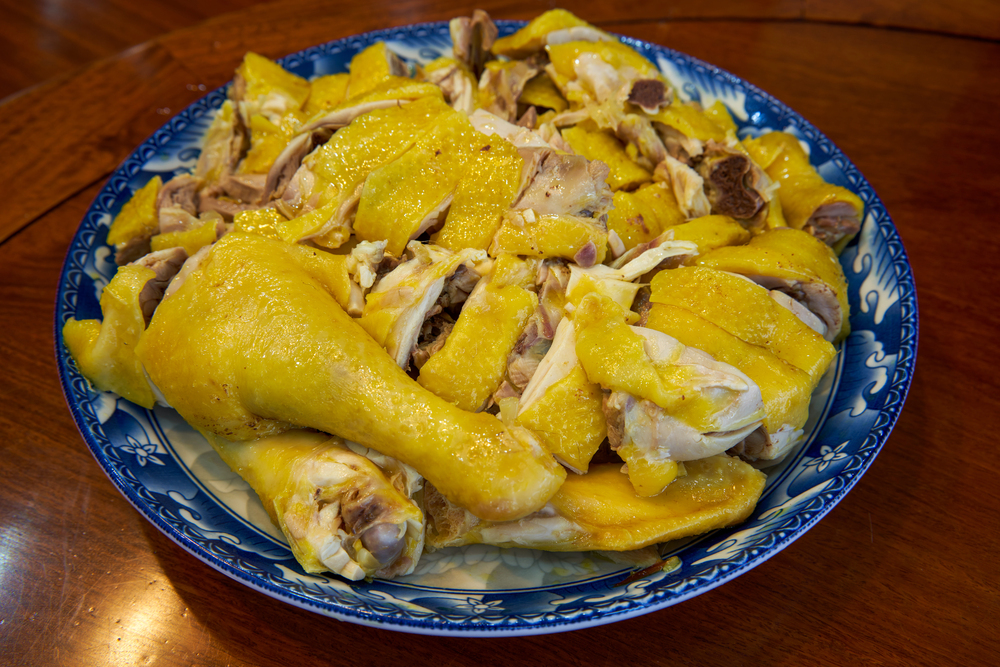
This ancient preparation method seals a whole chicken completely within a thick salt crust that functions as a natural oven, slowly drawing moisture from the bird while infusing it with subtle aromatics. Before encasing in salt, the chicken cavity receives a stuffing of ginger, scallions, and medicinal herbs including angelica root and goji berries that impart therapeutic properties according to traditional Chinese medicine. When cracked open tableside, the salt shell releases an aromatic steam cloud, revealing incredibly juicy meat that requires no additional seasonings. The technique originated during wartime periods when cooking fires would reveal military positions, necessitating this flameless cooking method.
Chaoshan Beef Hot Pot
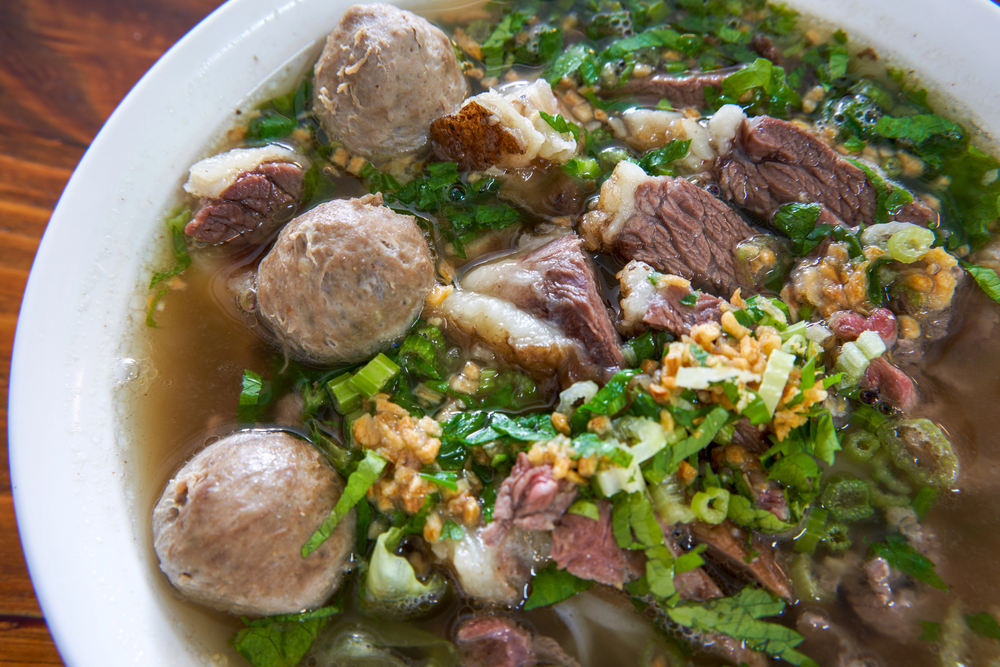
From the eastern edges of Guangdong comes this distinctive hot pot variation featuring paper-thin beef slices cooked for mere seconds in a unique broth. Unlike Sichuan or northern Chinese hot pots, the Chaoshan version features a supremely clear, light broth made from simmering beef bones for hours with minimal seasonings beyond white pepper and salt. The region’s proximity to the coast influences the accompanying condiment – a pungent satay sauce incorporating dried shrimp paste balanced with peanuts and garlic. Local etiquette dictates specific dipping techniques where meat receives only the briefest contact with broth before being seasoned at the table.
Like Travel Pug’s content? Follow us on MSN.
Hainan Coconut Desserts

The tropical climate of China’s southernmost province yields abundant coconuts used in numerous sweet preparations, unlike those found elsewhere in mainland China. Ba wei lao – “eight flavor pudding” – suspends fresh coconut flesh, red beans, lotus seeds, and taro in a delicate coconut milk jelly chilled in bamboo segments. The signature coconut rolls feature paper-thin crepes wrapped around freshly grated coconut mixed with brown sugar and pandan leaves, then steamed briefly to create a fragrant, chewy texture. These preparations reflect Hainan’s cultural connections with Southeast Asia while maintaining distinctive Chinese culinary techniques and aesthetic sensibilities.
Yunnan Steam-Pot Chicken
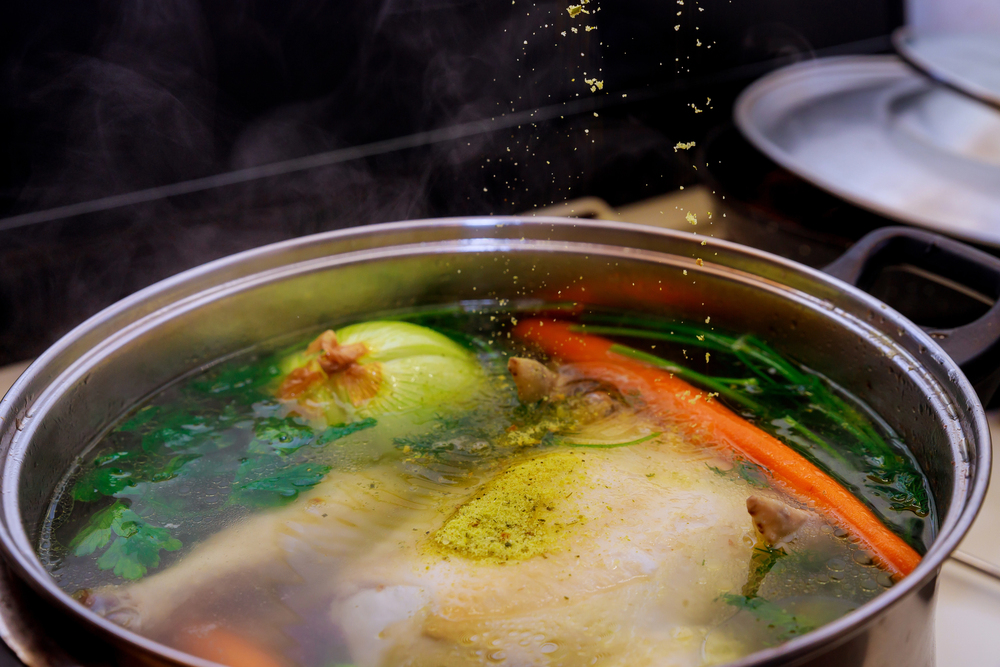
This ingenious cooking vessel resembles a ceramic Bundt pan with a central chimney that creates a self-basting environment as steam circulates continuously during cooking. Free-range mountain chickens marinate with Yunnan’s distinctive mushrooms, ham, and medicinal herbs before being sealed inside the pot with rice wine. The dish cooks tableside over a charcoal brazier, gradually releasing intoxicating aromas as the ingredients transform over several hours. The resulting meat becomes incredibly tender while developing a concentrated flavor profile impossible to achieve through conventional cooking methods. Each region of Yunnan features local variations incorporating foraged ingredients specific to their mountain microclimates.
Fujian Popiah
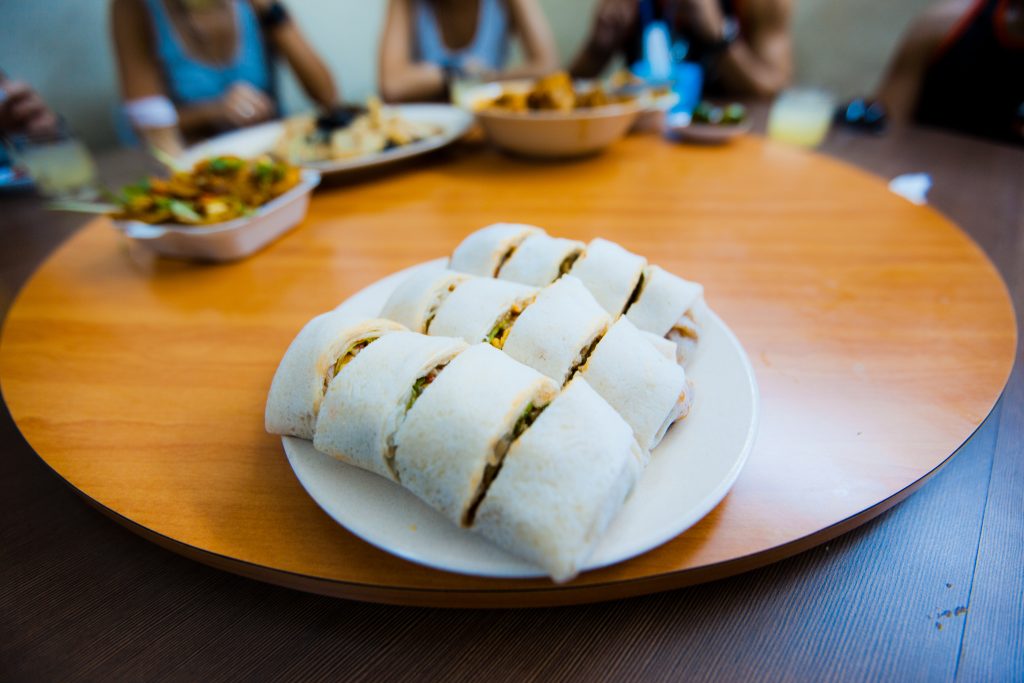
These fresh spring rolls from coastal Fujian province reflect the region’s historical maritime trade connections with Southeast Asia. Unlike fried spring rolls, popiah features a delicate wheat flour wrapper similar to a thin crepe, enclosing a filling of stir-fried turnip, bean sprouts, pork, and dried shrimp seasoned with oyster sauce. The preparation requires specialized skills – the paper-thin wrappers must stretch without tearing while retaining enough structural integrity to hold the substantial filling. Sweet and savory components balance perfectly with textural contrasts from crunchy vegetables and chewy dried seafood, creating a refreshing hand-held meal popular during spring festivals.
Like Travel Pug’s content? Follow us on MSN.
Guangdong Claypot Rice
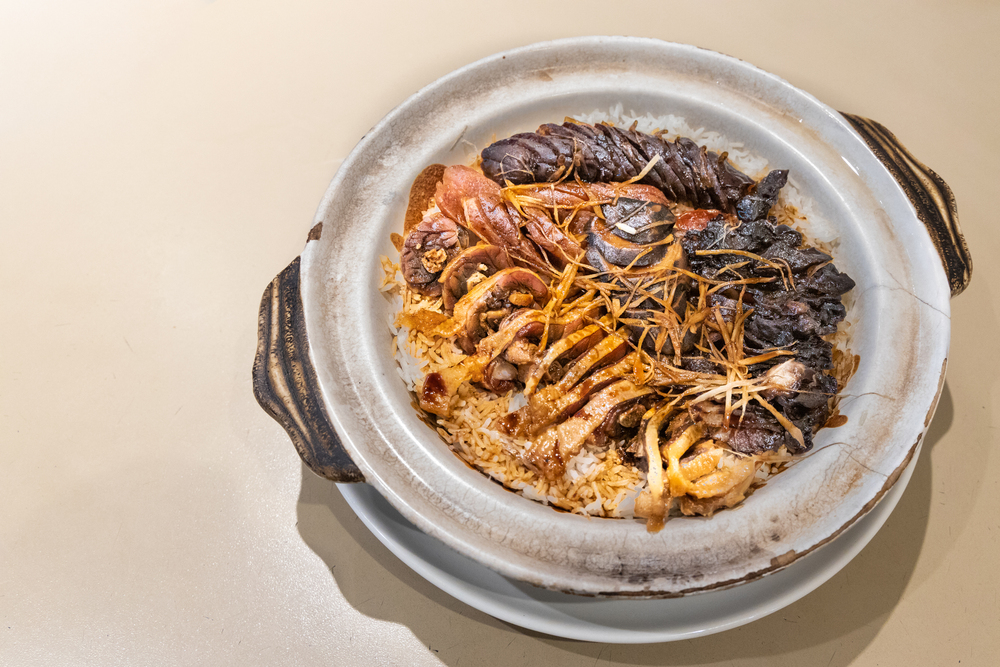
This humble yet profound dish showcases the remarkable flavor development possible through proper management of heat and timing. Special wide-mouthed clay pots conduct heat evenly while allowing excess moisture to escape, resulting in rice with distinctly different textures – crispy along the pot’s edges while remaining tender at the center. Traditional toppings include cured meats like lap cheong sausage and waxed duck that slowly render their fat into the rice below, creating natural seasoning without added oils. The characteristic scorched rice crust at the bottom, known as “fan jiao,” becomes a prized component rather than a mistake, typically loosened with hot tea poured into the emptied pot.
Beyond Borders

Southern Chinese cuisine demonstrates remarkable diversity within its regional frameworks while maintaining core philosophical approaches to ingredient quality and cooking technique. These dishes represent more than mere sustenance – they embody cultural heritage, family traditions, and historical narratives that continue evolving through contemporary interpretations by innovative chefs. The remarkable variety found across Southern China’s culinary landscape offers fascinating insights into how geography, climate, and cultural exchange shape food identities over centuries of development. Whether seeking refined banquet presentations or humble street foods, exploring these authentic regional specialties provides a direct connection to one of humanity’s most sophisticated and enduring culinary traditions.
More from Travel Pug

- Cities Growing so Fast You Won’t Recognize Them in 10 Years
- 13 Destinations Where Tourists Regularly Regret Their Trip
- 16 U.S. Cities That Are Quietly Becoming Travel Hotspots
- Where to Travel If You Love Long Bus Rides and Daydreams
- 20 Cities Perfect for Solo Travelers Who Crave Adventure & Culture
Like Travel Pug’s content? Follow us on MSN.
